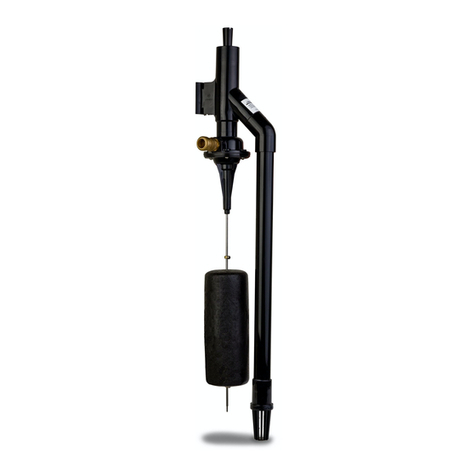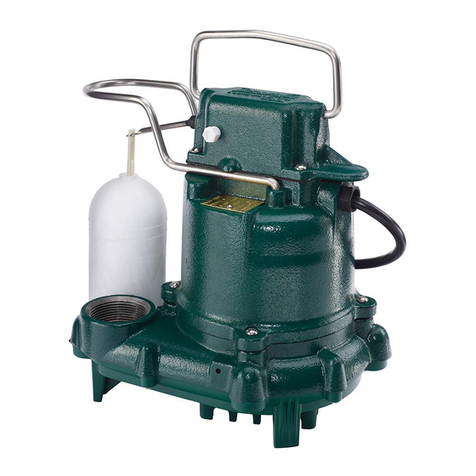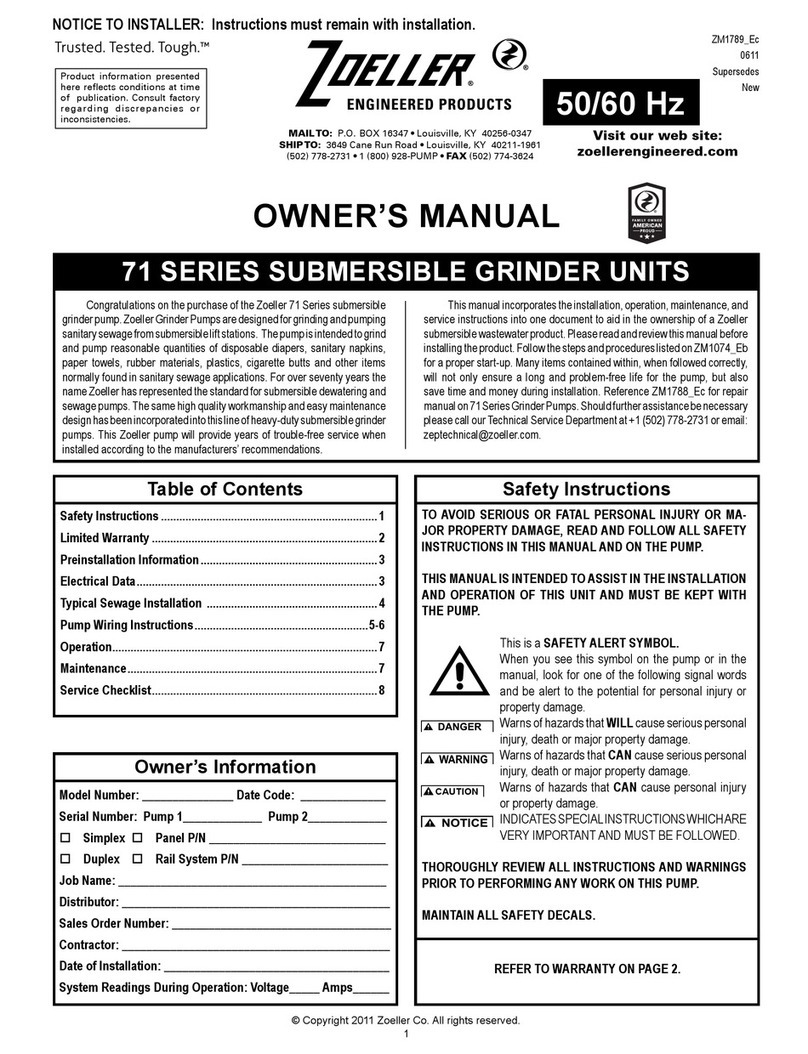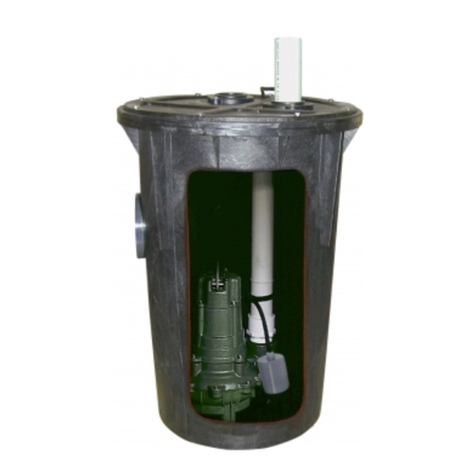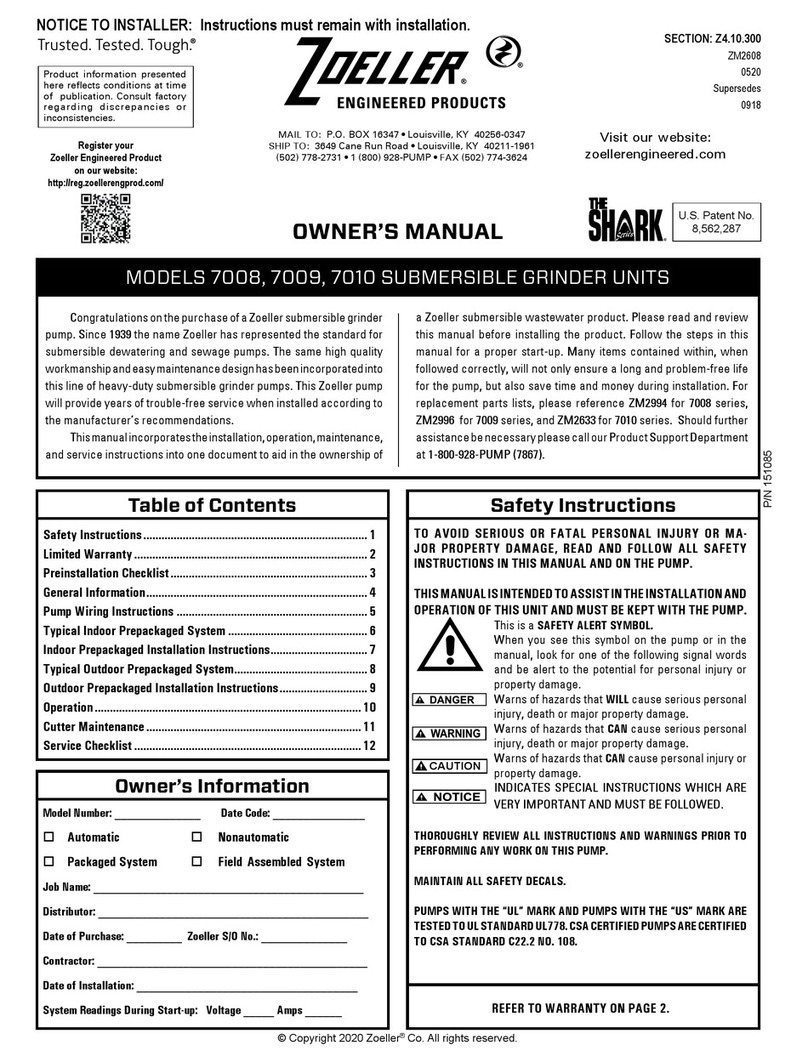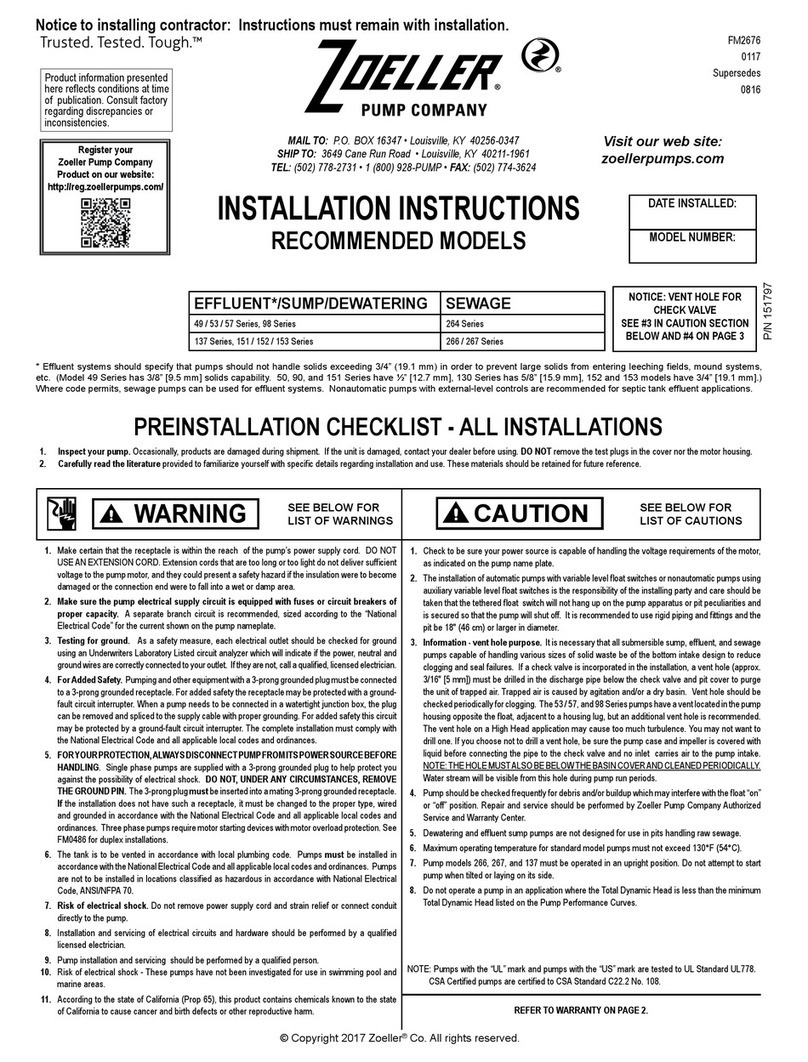
6
© Copyright 2020 Zoeller®Co. All rights reserved.
Outdoor Prepackaged System Installation Instructions
This set of instructions is for factory prepackaged outdoor progressing cavity grinder systems only. If this is a eld assembled outdoor
system you can use these instructions as a guideline.
Operation
GENERAL
Zoeller pumps are lubricated and tested at the factory prior to shipment and
require minimum pre-start-up maintenance.
Maximum operating temperature of pump liquid for grinder pumps must not
exceed 130°F (54°C).
These units are not designed to handle liquids other than sanitary sewage. If
pump is used to dewater areas with contaminated liquids with heavy or abrasive
materials, the warranty will be voided.
NAMEPLATE DATA
The nameplate, located on the top of the pump, indicates specic information
aboutthe construction ofthe pump. The model number and datecode information
should be recorded on the front page in the “Owner’s Information” section of
this manual.
SHORT TERM STORAGE
When not in use, the pump should be stored and the following is advised:
• Drain pump housing by laying pump horizontal with discharge down. Then
stand pump on legs.
• Storepumpinsidewheneverpossibleorcoverwithsometypeofprotectivecovering.
• Tape or seal in plastic bag the terminal ends of wire leads.
• Spray coat unpainted surfaces with rust inhibiting oil.
• The impeller should be rotated every six months in order to keep the seal
lubricated and not develop a permanent set.
If panel is to be stored, the following is advised:
• Store the panel inside whenever possible and leave in the shipping box.
• All openings shall be sealed.
• Store in an upright position.
• Do not stack anything on top of panel.
START-UP PROCEDURE
Before placing the equipment into operation the following should be checked:
• Clean pit.
• Electrical boxes dry and securely installed.
• Floats positioned properly.
• Discharge valves open.
• Adequate water level in basin for pump submersion.
Once the above has been veried proceed with the following checks:
• Pump power cables and control oats properly installed and voltage veried.
• Conduit connections to panel are properly sealed.
• After installing the pump into the basin, with adequate submergence, open the
discharge valve fully. Start the unit using manual controls. If ow is appreciably
less than rated performance, pump may be air locked. To expel trapped air,
jog the unit several times, using the manual controls.
• Have a qualied electrician take voltage and current measurements with the
pump running. Record these readings in the space provided in the “Owner’s
Information” section on page 1 of this manual for future reference.
ADJUSTMENT PROCEDURE
Pumps: No adjustments are required.
Floats: Refer to the system drawing or to the panel wiring schematic for the
desired location of each oat switch setting. The off switch should
deactivate the pump before the water level drops to the mid-point of
the pump.
Valves: Discharge valves should be placed in the fully open position. Systems
shouldnot beoperated forextended periodsof timewith thedischarge
valves partially closed due to damaging the valve. Check for an anti-
siphon valve when used in a pressure sewer.
SHUTDOWN PROCEDURES
If a system is shutdown for more than six months, the following is recommended:
Pumps: If pit is to remain dry, then the pump can remain in the pit. Do not run
dry. If the pit is to remain wet, the pump should be removed and stored
as noted above.
Panels: The panel should have all openings sealed to prevent moisture and dust
from entering the enclosure. Prior to restarting system, the panel should
be inspected for presence of moisture and any loose connections.
Valves: Consult the valve/actuator supplier for information concerning these
systems components.
1. Review the drawing in Fig. 4 on page 5 and the actual system to become
familiar with the components in the packaged grinder pump system. Review
where the unit will be installed. Determine where the power feed, inlet pipe,
and discharge pipe will be located.
2. Removetheunitfrompacking. Prepackagedoutdoorsystemsarepreassembled
at the Zoeller Company and require a minimum of eld assembly work. Float
switches are set and tethered for proper operation from the Factory. The
alarm switch should be located 2” above the pump “on” level.
3. Floatswitchesare tied inplaceforshipping purposesonallmodel prepackaged
systems. Cut the cable tie around each oat switch bulb or the unit will not
operate properly. Verify that where the oat switches are set will work for
your application. Verifying that the float switches are set properly and will not
hang up inside the basin is the responsibility of the installing contractor.
4. Dig a hole for the basin. The hole should be at least 24” larger in diameter
than the basin diameter to provide 12” of backll all around and deep enough
to provide either 12” of compacted backll or 6” when a concrete pad is
required. Ensure the removable cover extends above the nished grade line
and the grade slopes away from the unit. Backll and subbase should be 1/8”
–3/4” pea gravel or 1/8” –1/2” crushed stone. (Reference basin installation
instructions included with unit)
5. Note: Care must be taken when excavating in order to avoid underground utilities
and disturbance of existing structure foundations. The hole should be located at
least ten feet from adjacent structures. Additional distance may be required to
sufficiently locate the basin outside of the loading area of the adjacent structures.
6. The location of the inlet tting is determined by the depth of the inlet pipe. The
inlet tting must be used with 4” pipe. It is best to install the inlet on the side of
the basin opposite the oat switches. To install, use a 5” hole saw to drill into
the side of the basin at the correct elevation. Center the hub inner diameter
with the hole in the basin. Attach the hub to the side of the basin using the
sealant and hardware provided.
7. The bottom of the excavation can now be back lled and compacted. Set
basin in hole and connect the 4” inlet pipe to the inlet hub.
8. The discharge piping is connected to the 1-1/4” threaded fitting located
in the basin sidewall.
9. Connect pull rod to Pump assembly. Connect lift cable to top of pump. Lower
the pump into basin ensuring the discharge pipe bracket slides into the
disconnect tting.
10. Pouring a concrete anchor around system can now be completed. Basin
should be lled with water when pouring concrete to minimize movement
of the system. Back ll around basin with specied media. Care should
be used to avoid damaging components or leaving voids when back lling.
Refer to Basin installation reference guide on more specic requirements.
11. Note: The progressing cavity grinder basin is a sewage holding tank. Vent
connection should be installed in accordance with all national, state and local
plumbing codes.
12. Dig a trench for the electrical conduit. Trench should be located at least
18” deep and follow all applicable NEC codes. Connect electrical wiring to
Junction box according to wiring instructions included in this manual and
wiring diagram in box. Use the potting kit provided with the junction box.
Use the included sealant when closing junction box.
13. If used, a control panel is installed within sight of the system. Connect oat
switches and pump cords according to the “Pump Wiring Instructions”
found in this manual and located inside the panel enclosure.
14. Remove any debris from the basin. Using clean water, check the system
for proper operation.
15. Seal and secure the lid using the proper bolts and sealant when using a lid
without a formed gasket.
16. Add water to the basin and test the system for leaks and proper pump
operation.
17. Record system start up data for future reference.
